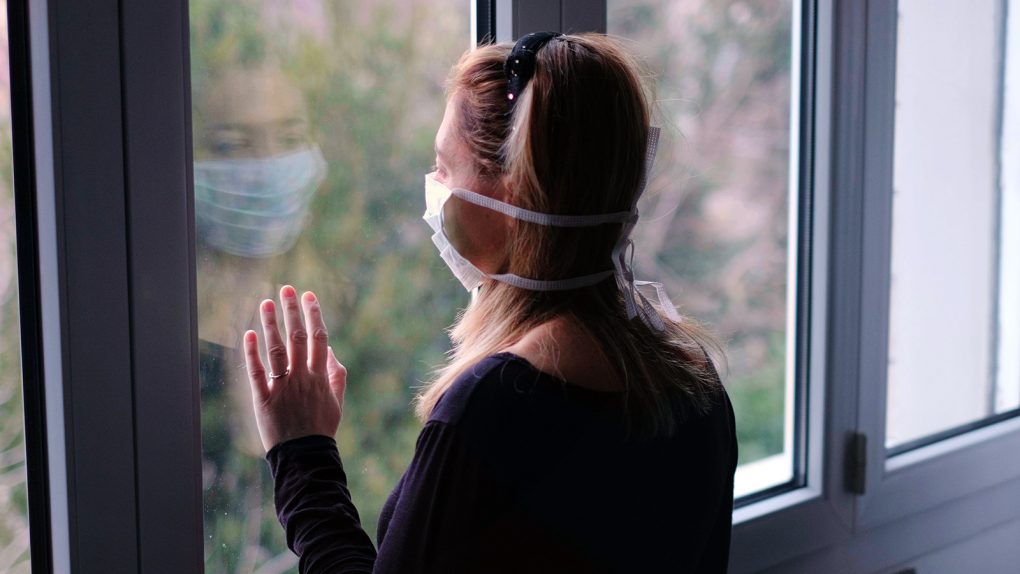- More coronavirus studies show the risk of COVID-19 spread through the air, further proving that aerosol transmission should be a serious concern.
- A study from China showed that air exhaled by COVID-19 patients could contain high viral loads and that breathing can play a role in coronavirus transmission.
- A separate study from the Netherlands highlighted the importance of proper ventilation in helping to limit the spread of the virus.
You’ve probably heard recently that the novel coronavirus can spread through the air. That’s because the World Health Organization (WHO) finally acknowledged the risk, albeit reluctantly, just as more and more studies have shown proof that aerosols from infected individuals can contain enough virus to transmit the disease. What’s more, these aerosols can travel greater distances than watery droplets. Researchers have yet to determine what amount of viral load in the air is enough to infect patients, but the message is clear. The use of face masks in indoor settings can make a huge difference, and ventilation might need to be studied to help prevent the spread of the virus. A few new studies add to the increasing body of research that proves coronavirus aerosols can be infectious, and officials should take this risk into account when devising new safety measures.
The University of Minnesota’s Center for Infectious Disease Research and Policy (CIDRAP) detailed the discoveries earlier this week. The first study comes from China and was accepted for publication in the journal Clinical Infectious Diseases. Researchers measured the exhaled breath of COVID-19 patients and found that they can exhale millions of viral RNA particles per hour in the early phases of the illness. That’s a massive development that certainly needs more research. We already know from other studies that these virus particles can be expelled by coughing, sneezing, and even just talking, but this new development is quite scary.
The scientists looked at exhaled breath samples from 49 COVID-19 patients from 10 countries, 4 hospitalized patients without coronavirus, and 15 healthy people from Beijing. The researchers used regular PCR tests to identify the virus and took samples from 242 surfaces in quarantine hotels, hospitals, and personal belongings. The researchers discovered that 26.9% of exhaled breath samples contained viral RNA compared to 3.8% of air samples and 5.4% of surface swabs. Interestingly, breath samples from two patients were positive for coronavirus RNA, but their hands, cell phones, and toilets tested negative. Viral RNA was also found on an air ventilation duct that was located under a patient’s bed.
Of the 242 surface swabs, 16.7% of them came from toilet bowls, 12.5% from floors, and 4% from hands, pillowcases, phones, and computer keyboards. The surfaces that were touched by healthcare staff only accounted for 2.6% of positive tests. Other surfaces, including most phones and handles, tested negative.
The researchers concluded that viral RNA breath emissions varied with activity level, disease stage, and age. However, the researchers think that the findings prove that the illness spreads mostly via aerosols rather than droplets, which are the bigger particles that are ejected when coughing and sneezing. The study did not prove actual infectivity or transmission, so more research is definitely needed.
The other study from the Netherlands also furthers the case for aerosol transmission. Dutch researchers documented a COVID-19 outbreak that occurred after the country had flattened the curve. Only 493 people tested positive in the country in the week of the outbreak, compared to nearly 8,400 at the height of the local coronavirus epidemic in April.
The researchers explained that a type of air conditioning system might be to blame for a cluster of coronavirus patients in the ward of a psychiatric institution. While staff tending to patients were required to wear surgical masks and not all residents of the ward were mobile, 34 people were infected in the ward, including 17 healthcare workers and 17 patients. None of the 95 residents and 106 workers in the other six wards tested positive.
These scientists believe that the ventilation system in that ward has contributed to the outbreak. The smart AC unit would only refresh the air when an indoor carbon dioxide sensor indicated elevated levels. As a result, the AC unit recirculated the same unfiltered air for longer periods of time. The other six wards had different AC systems that refreshed the air regularly.
Viral RNA was found inside the dust filter of the shared living room air conditioners and in four filters from three of eight ventilation units. “We advise that prevention of COVID-19 transmission should take into account the possibility of aerosol transmission in healthcare facilities and other buildings where ventilation systems recirculate unfiltered inside air,” the authors wrote.








